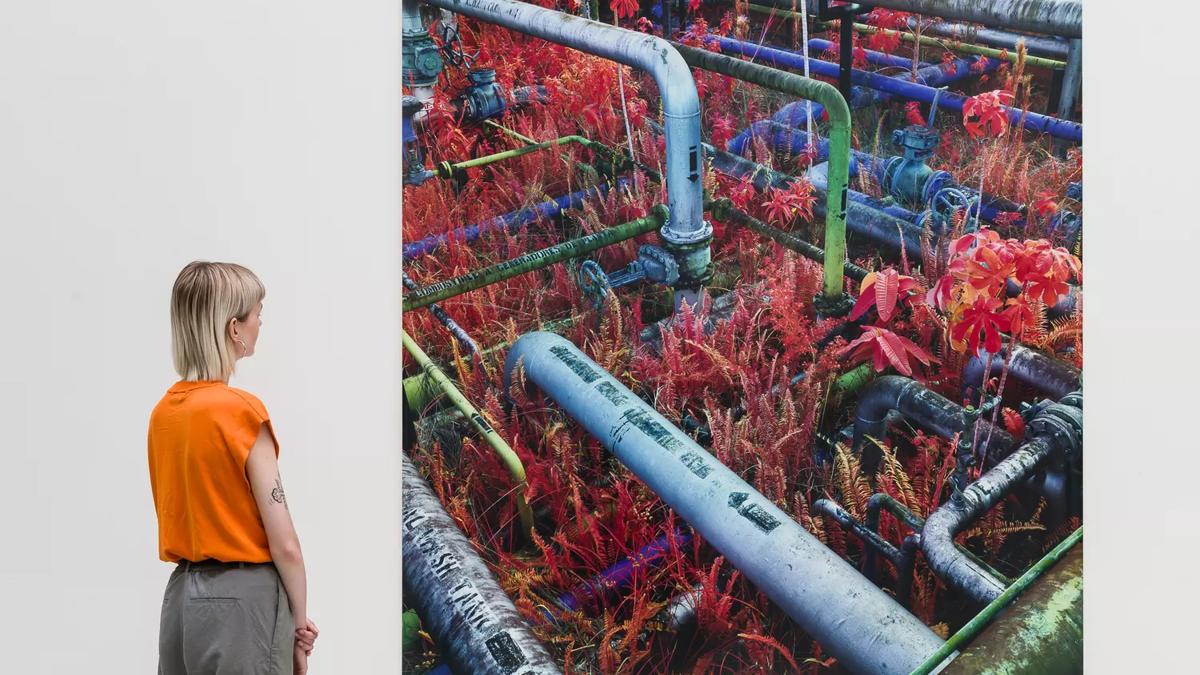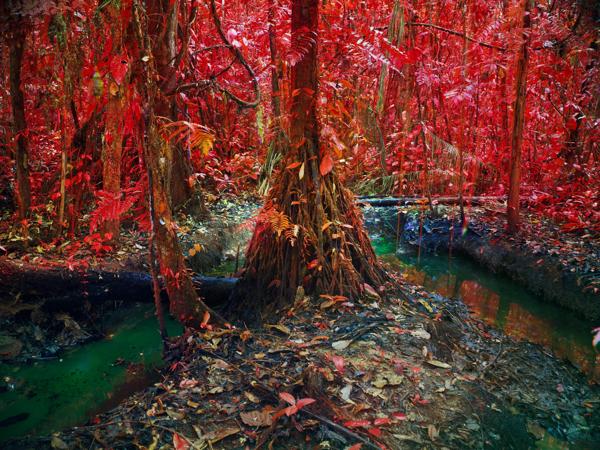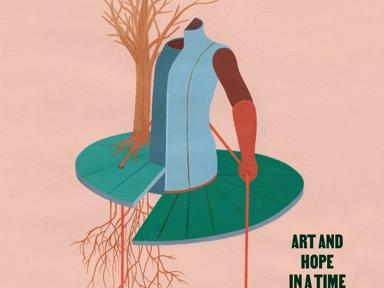Dear Earth artist in focus: Richard Mosse

Richard Mosse’s work pushes photography and film to their technical limits in an attempt to articulate the scale of political and ecological disaster that ‘exist outside the limits of human language and perception’.
Since 2018, Mosse has been documenting the Amazon through the specialist imaging technology used both by scientists reporting on environmental degradation and by profit-hungry companies scoping out new mining and agribusiness prospects. Using multispectral imaging, Moose captures very specific narrow bands of light from across the electromagnetic spectrum.
Photographs including Oil Spill on Kichwa Territory III, Block 192, Roi Tigre, Loreto (2023) have then been processed using Geographic Information Systems (GIS) technology, which assigns false colours to these spectral bands to reveal environmental degradation that is imperceptible to the naked eye.

Grid (Palimi-ú) (2023) brings together two contrasting elements: documentary footage shot on analogue infrared 35mm film and projected at scale, and a fast-moving grid of digital images presented across 16 LCD screens. The film presents protest speech by several Yanomami people living in Palimi-ú, a village located in Roraima State, Northern Brazil. Since the 1990s illegal gold miners have been invading Yanomami ancestral land with lethal consequences to both human and non-human life. Footage playing in sync across the grid of screen – displaying multispectral images captured by drones flying above sites of environmental crimes in the rainforest – interrupts and contextualises the film footage.
These images are the source of data used in GIS mapping. Moose calls this the ‘God’s eye view’ that simultaneously carries the inherent extractive violence of aerial survey mapping as well as the scientific potential of remote sensing, which helps us to understand the extent of the crisis in the Amazon Basin. Caught in the multidisciplinary tension between apparently objective topographic imaging and emotionally charged, eye-level confrontation, the viewer is left to piece together a narrative from the fragments provided.

Mosse's work featured in Dear Earth, a group show featuring work from 15 artists, was at Hayward Gallery, 21 June – 3 September, 2023.
This article, written by Debbie Meniru, is taken from the Dear Earth catalogue, which features texts on each artist in the exhibition, and essays by Rachel Thomas, Rebecca Solnit, Maja and Reuben Fowkes, Greta Thunberg and Imani Jacqueline Brown. Also included are a conversion between artist Jenny Kendler and birder J. Drew Lanham, a manifesto by Agnes Denes, poetry by Deena Metzger and an extract from an interview on activism by Andrea Bowers.

The Dear Earth catalogue, published by Hayward Publishing, is available to purchase from the Southbank Centre shop.